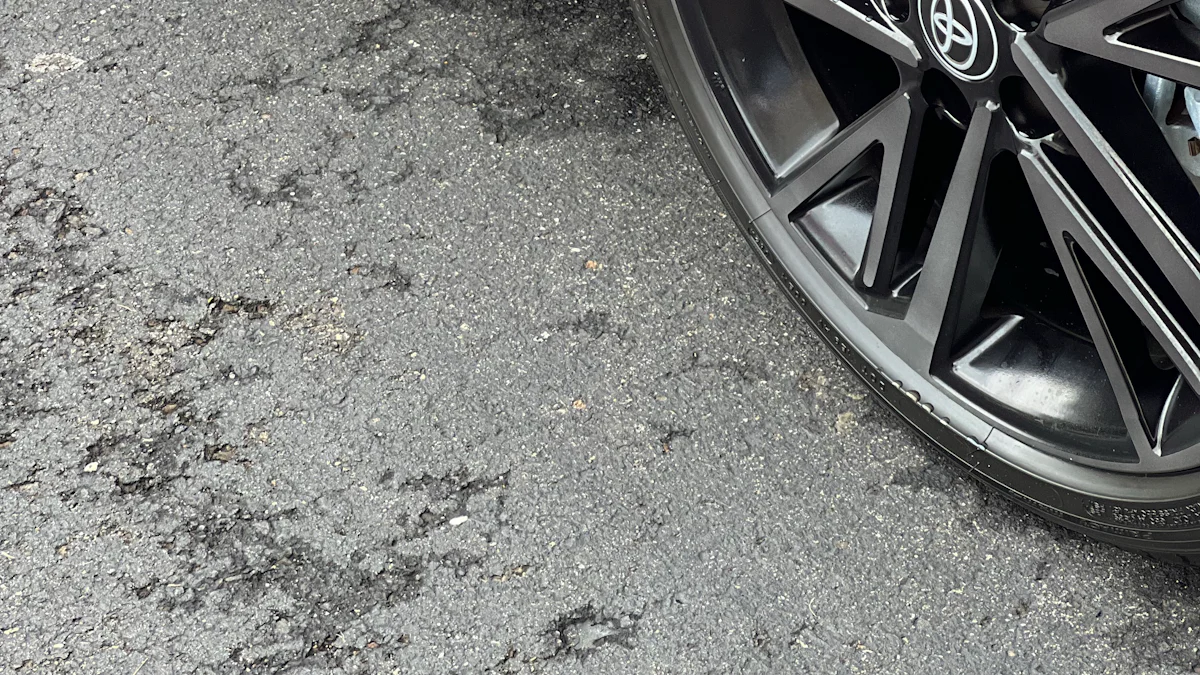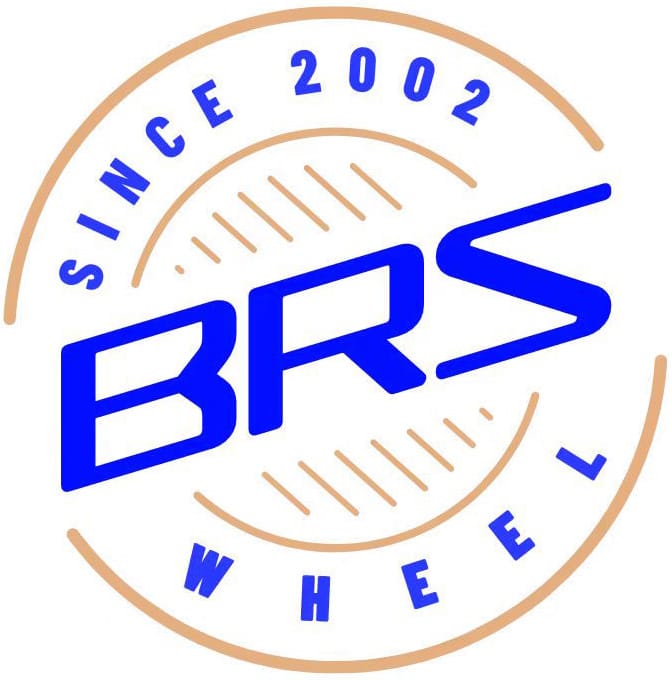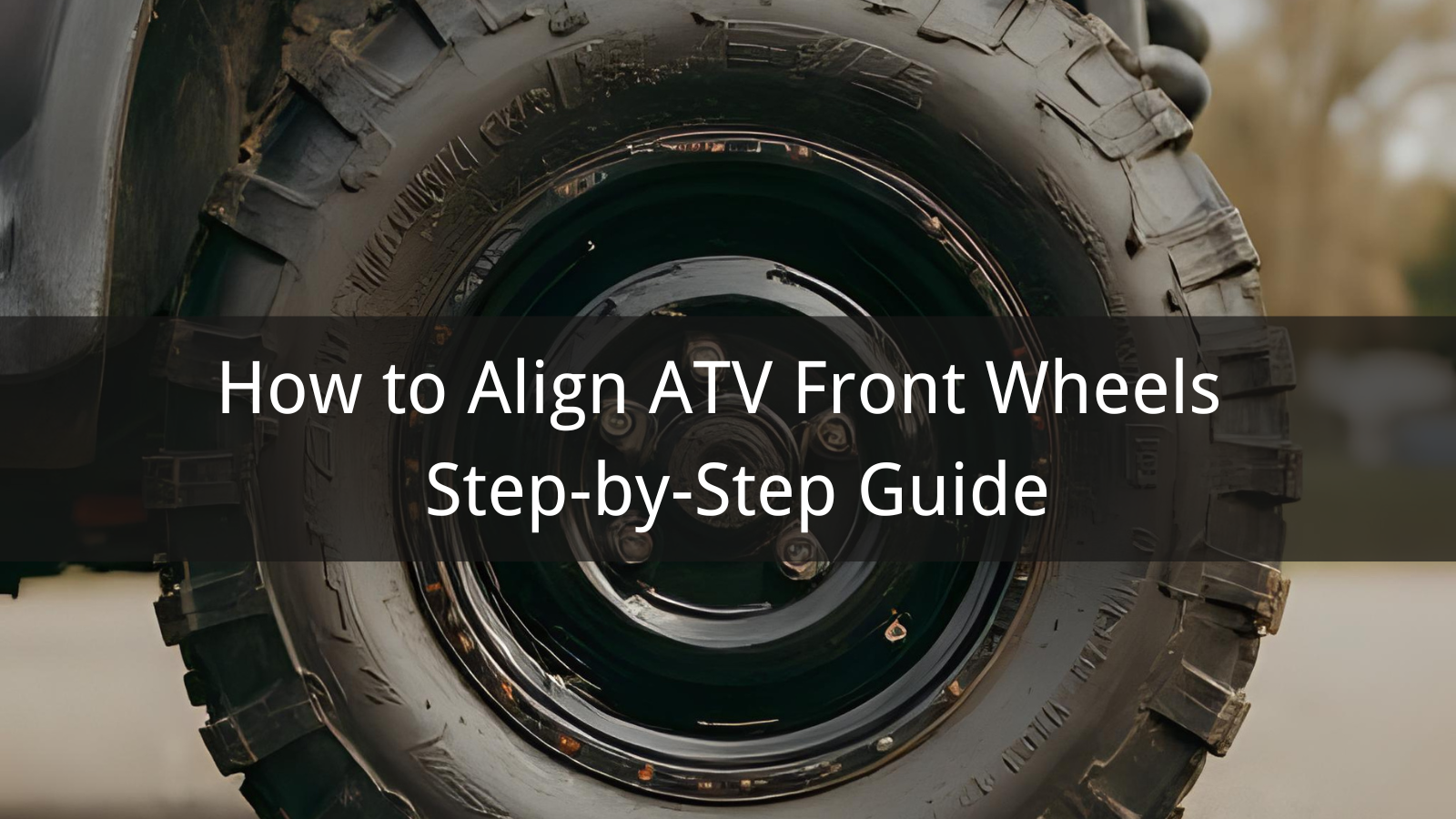
Choosing the right rim size impacts your vehicle’s performance and safety. A 15×6 rim suits vehicles like SUVs or trucks that need wider tires for better stability and handling. Compact cars or vintage models often benefit from a 15×5 rim, which pairs well with narrower tires to enhance fuel efficiency. The difference lies in how these rims accommodate tire widths, influencing grip and control. For example, a 15×6 rim offers more versatility, fitting a broader range of tire sizes. Understanding these distinctions helps you select the best option for your driving needs.
Key Takeaways
- Choose a 15×6 rim for vehicles like SUVs and trucks that require wider tires for improved stability and handling.
- Opt for a 15×5 rim if you drive a compact car or vintage model, as it enhances fuel efficiency and maneuverability.
- Consider your driving conditions: 15×6 rims are better for off-road or challenging terrains, while 15×5 rims suit urban driving.
- Always refer to your vehicle’s manufacturer specifications to ensure the right rim size for optimal performance and safety.
- Consult a professional if unsure about rim compatibility to avoid issues like uneven tire wear or reduced fuel efficiency.
- Evaluate your performance needs: prioritize handling and control with 15×6 rims, or focus on cost-effectiveness and fuel efficiency with 15×5 rims.
Understanding Tire and Rim Sizes

What Do 15×5 and 15×6 Mean?
The numbers in 15×5 and 15×6 represent the rim’s diameter and width. The “15” indicates the rim’s diameter in inches, while the second number refers to the rim’s width. For example, a 15×6 rim has a diameter of 15 inches and a width of 6 inches. These measurements are crucial because they determine the type of tires that can fit the rim.
Rim width plays a significant role in tire compatibility. A wider rim, like the 15×6, can accommodate broader tires, which often provide better grip and stability. On the other hand, a narrower rim, such as the 15×5, pairs with slimmer tires, which may enhance fuel efficiency and suit vehicles designed for lighter loads. Understanding these dimensions helps you choose the right rim for your vehicle’s needs.
Key Differences Between 15×5 and 15×6 Rims
The primary difference between 15×5 and 15×6 rims lies in their width. This seemingly small variation impacts tire compatibility, vehicle performance, and overall driving experience. Here are the key distinctions:
Tire Compatibility: A 15×6 rim supports a wider range of tire sizes compared to a 15×5 rim. This flexibility makes it suitable for vehicles requiring broader tires, such as SUVs, trucks, or trailers. For instance, many trailer wheels, including those used on construction or camper trailers, come in 15×6 sizes to handle heavier loads and provide better stability.
Performance: Wider rims like the 15×6 improve handling and cornering due to the increased tire contact with the road. This makes them ideal for vehicles prioritizing performance and control. In contrast, the 15×5 rim, with its narrower profile, is better suited for compact cars or vintage models where fuel efficiency and lightweight design are more critical.
Load Capacity: The construction and width of a rim also influence its load-bearing capacity. For example, steel rims in the 15×6 size often support higher maximum loads, such as 2,150 lbs, compared to narrower rims. This makes them a popular choice for heavy-duty applications like trailers or utility vehicles.
Aesthetic Options: Rims come in various styles and finishes. A 15×6 rim might feature designs like black spoke or modular silver, offering more aesthetic choices for customization. These options allow you to match the rim to your vehicle’s style while maintaining functionality.
By understanding these differences, you can make an informed decision based on your vehicle type, driving habits, and performance needs.
Factors to Consider When Choosing Between 15×5 and 15×6
Vehicle Type
Your vehicle type plays a significant role in determining whether a 15×5 or 15×6 rim is the better choice. Compact cars, often designed for efficiency and lighter loads, typically pair well with 15×5 rims. These narrower rims support slimmer tires, which reduce rolling resistance and improve fuel economy. For example, vintage models or city cars benefit from this setup, as it aligns with their lightweight design and purpose.
On the other hand, SUVs, trucks, and utility vehicles demand wider rims like the 15×6. These vehicles require broader tires to handle heavier loads and provide better stability. A 15×6 rim accommodates this need by offering a wider base for the tire, ensuring improved grip and control. This makes it ideal for vehicles used in off-road conditions or those carrying substantial cargo.
Driving Conditions
The environment where you drive also influences your rim choice. If you frequently navigate urban streets or highways, a 15×5 rim may suit your needs. Its compatibility with narrower tires enhances maneuverability and fuel efficiency, making it perfect for daily commutes or city driving.
For rugged terrains or challenging weather conditions, a 15×6 rim offers better performance. The wider rim allows for larger tires, which improve traction on uneven surfaces. For instance, autocross racers often prefer wider rims to enhance cornering and stability during sharp turns. Similarly, if you drive in snowy or muddy areas, the broader tire base supported by a 15×6 rim ensures better grip and safety.
Performance Needs
Your performance expectations should guide your decision. If you prioritize fuel efficiency and a smoother ride, a 15×5 rim is a practical option. Its narrower profile reduces tire weight, which can lead to better mileage and less strain on your vehicle’s suspension.
However, if handling and control are your main concerns, a 15×6 rim is the superior choice. The wider rim supports tires with shorter sidewalls, which enhance cornering and overall stability. For example, performance enthusiasts often select 15×6 rims to achieve a sportier look and better grip on the road. Additionally, the broader tire compatibility of a 15×6 rim allows you to explore a greater selection of performance tires, ensuring you meet your specific driving needs.
Pros and Cons of 15×5 Tires
Advantages
Fuel Efficiency
A 15×5 rim pairs with narrower tires, which reduce rolling resistance. This design helps your vehicle consume less fuel, making it an excellent choice for daily commutes or long highway drives. Compact cars and vintage models often benefit from this setup, as it aligns with their lightweight structure and efficiency goals.Improved Maneuverability
The slimmer profile of a 15×5 rim enhances your vehicle’s agility. It allows for easier navigation through tight spaces, such as crowded city streets or parking lots. This feature makes it ideal for urban driving where quick turns and precise handling are essential.Cost-Effective Option
Narrower tires compatible with 15×5 rims are generally more affordable. If you’re looking to save on tire replacements or initial costs, this rim size offers a budget-friendly solution without compromising basic performance.Lightweight Design
The reduced width of a 15×5 rim contributes to a lighter overall wheel assembly. This feature minimizes strain on your vehicle’s suspension system, leading to a smoother ride and potentially extending the lifespan of your car’s components.Versatility for Vintage Cars
Many vintage or classic cars were originally designed with narrower rims like the 15×5. Choosing this size ensures compatibility with the vehicle’s original specifications, preserving its authenticity and performance.
Disadvantages
Limited Tire Compatibility
A 15×5 rim supports a narrower range of tire sizes compared to wider rims like the 15×6. This limitation restricts your options when selecting tires, especially if you’re seeking performance-oriented or all-terrain models.Reduced Stability
Narrower tires provide less contact with the road surface. This design can compromise stability, particularly during sharp turns or at higher speeds. If you prioritize handling and control, a 15×5 rim may not meet your expectations.Lower Load Capacity
The construction of a 15×5 rim typically supports lighter loads. This feature makes it unsuitable for vehicles carrying heavy cargo or towing trailers. For instance, trailers often require wider rims like the 15×6 to handle increased weight and maintain balance.Less Traction in Challenging Conditions
Narrower tires struggle to provide adequate grip on slippery or uneven surfaces. If you frequently drive in snowy, muddy, or off-road conditions, the limited traction of a 15×5 rim could pose safety concerns.Minimal Aesthetic Options
While functional, 15×5 rims offer fewer design and finish choices compared to wider rims. If you’re looking to customize your vehicle’s appearance, this size might not provide the variety you desire.
By weighing these advantages and disadvantages, you can determine if a 15×5 rim aligns with your vehicle’s requirements and driving habits. Understanding these factors ensures you make an informed decision tailored to your needs.
Pros and Cons of 15×6 Tires
Advantages
Enhanced Stability and Handling
A 15×6 rim provides a wider base for tires, which increases the contact area with the road. This design improves stability, especially during sharp turns or high-speed driving. Vehicles like SUVs and trucks benefit from this feature, as it enhances control and reduces the risk of skidding. The improved handling makes these rims ideal for drivers who prioritize performance and safety.Versatile Tire Compatibility
The 15×6 rim accommodates a broader range of tire sizes compared to narrower rims. This flexibility allows you to choose tires that suit your specific driving needs, whether for daily commutes, off-road adventures, or performance racing. For instance, many trailers and utility vehicles use 15×6 rims to support larger tires, ensuring better load distribution and traction.Higher Load Capacity
Steel rims in the 15×6 size often support impressive load capacities, such as 2,150 lbs. This makes them suitable for heavy-duty applications, including towing trailers or carrying substantial cargo. Aluminum versions of the same size can handle even higher loads, reaching up to 2,860 lbs. If you frequently transport heavy items, this rim size ensures durability and reliability.Improved Traction in Challenging Conditions
Wider tires supported by a 15×6 rim offer better grip on uneven or slippery surfaces. This feature proves valuable in snowy, muddy, or off-road environments. Drivers navigating rugged terrains or harsh weather conditions will appreciate the enhanced traction and safety provided by this rim size.Aesthetic Customization Options
The 15×6 rim comes in various styles and finishes, such as black spoke or modular silver designs. These options allow you to customize your vehicle’s appearance while maintaining functionality. Whether you prefer a sleek, modern look or a rugged, off-road aesthetic, this rim size offers plenty of choices to match your style.
Disadvantages
Reduced Fuel Efficiency
The wider profile of a 15×6 rim increases rolling resistance, which can lead to higher fuel consumption. If you prioritize fuel economy, this rim size may not be the most efficient choice. Compact cars or vehicles designed for lightweight performance might experience a slight decrease in mileage with this setup.Heavier Weight
A 15×6 rim, especially in steel, adds more weight to your vehicle compared to narrower rims. This additional weight can strain your suspension system and slightly impact acceleration. While the difference may be negligible for larger vehicles, it could affect smaller cars or those with less powerful engines.Higher Cost of Tires
Tires compatible with a 15×6 rim are often wider and more expensive than those for narrower rims. If you’re on a tight budget, the increased cost of tire replacements might be a drawback. However, the performance benefits often justify the investment for many drivers.Limited Suitability for Compact Cars
The 15×6 rim is not ideal for compact or vintage cars designed for narrower tires. Using this rim size on such vehicles could compromise their original specifications, affecting performance and aesthetics. If you own a smaller car, a narrower rim like the 15×5 might be a better fit.Potential Overkill for Urban Driving
If you primarily drive in urban areas with smooth roads, the advantages of a 15×6 rim may not be fully utilized. The wider tires and enhanced traction are more beneficial in challenging conditions or high-performance scenarios. For city driving, a narrower rim might offer sufficient performance without the added cost or weight.
By evaluating these pros and cons, you can determine if a 15×6 rim aligns with your vehicle’s requirements and driving habits. This analysis ensures you make an informed decision that balances performance, cost, and practicality.
How to Determine the Right Fit for Your Vehicle

Check Your Vehicle’s Manufacturer Specifications
Your vehicle’s manufacturer specifications provide the most reliable guidance for selecting the right rim size. These details are often found in your owner’s manual or on a sticker inside the driver’s side door. The manufacturer specifies the ideal rim size, including diameter and width, to ensure optimal performance and safety. For example, if your vehicle is designed for a 15×6 rim, using this size will maintain proper tire alignment and handling. Ignoring these recommendations can lead to issues like uneven tire wear or reduced fuel efficiency. Always prioritize these specifications to avoid compromising your vehicle’s performance.
Consider Your Driving Habits
Your driving habits play a crucial role in determining the best rim size for your needs. If you primarily drive in urban areas or on highways, a narrower rim like the 15×5 may suit you better. This size supports slimmer tires, which improve fuel efficiency and make maneuvering through tight spaces easier. On the other hand, if you frequently drive on rugged terrains or in challenging weather conditions, a wider rim such as the 15×6 rim offers better stability and traction. For instance, off-road enthusiasts often prefer wider rims to handle uneven surfaces and maintain control during sharp turns. Evaluate your daily driving patterns to choose a rim size that aligns with your lifestyle.
Consult a Professional
When in doubt, consulting a professional ensures you make the right decision. Tire and rim specialists have the expertise to assess your vehicle’s requirements and recommend the most suitable rim size. They can also help you understand how factors like load capacity, tire compatibility, and driving conditions influence your choice. For example, if you’re considering upgrading to a 15×6 rim for better handling, a professional can confirm whether your vehicle’s suspension system can support the change. Seeking expert advice minimizes the risk of errors and ensures your vehicle remains safe and efficient.
FAQs
1. What is the difference between 15×6 and 15×5.5 rims?
The primary difference lies in their width and finish. A 15×6 rim has a width of 6 inches, while a 15×5.5 rim measures 5.5 inches wide. This slight variation affects tire compatibility and performance. Additionally, the 15×6 rim typically comes in black, whereas the 15×5.5 rim is often silver. These distinctions influence both the functionality and aesthetic appeal of the rims.
2. How does clearance differ between 15×6 and 15×5.5 rims near the tie rod end?
The clearance near the tie rod end varies slightly between these two rim sizes. A 15×6 rim provides about 1/4 inch of clearance, while a 15×5.5 rim offers approximately 1/2 inch. This difference can impact the fitment and maneuverability of the rims, especially in vehicles with tight suspension setups. Always check your vehicle’s specifications to ensure proper clearance.
3. Can a tire designed for a 15×5 rim fit on a 15×6 rim?
Yes, many tires designed for a 15×5 rim can also fit on a 15×6 rim. Tires are generally compatible with a range of rim widths. However, the fitment depends on the specific tire size and manufacturer recommendations. Always consult a professional or refer to the tire’s specifications to confirm compatibility.
4. Which rim size is better for fuel efficiency?
A 15×5 rim is better for fuel efficiency. Its narrower width supports slimmer tires, which reduce rolling resistance. This design helps your vehicle consume less fuel, making it an excellent choice for daily commutes or long highway drives. Compact cars and vintage models often benefit from this setup.
5. Are 15×6 rims suitable for compact cars?
While 15×6 rims can technically fit some compact cars, they may not be the best choice. Compact cars are often designed for narrower rims like the 15×5, which align with their lightweight structure and efficiency goals. Using a 15×6 rim on a compact car could affect its handling and fuel economy. Always follow your vehicle manufacturer’s recommendations for optimal performance.
6. Do wider rims like the 15×6 improve stability?
Yes, wider rims such as the 15×6 enhance stability. They provide a broader base for tires, increasing the contact area with the road. This design improves handling, especially during sharp turns or high-speed driving. Vehicles like SUVs and trucks benefit significantly from this feature, as it enhances control and reduces the risk of skidding.
7. What factors should I consider when choosing between 15×5 and 15×6 rims?
When deciding between these rim sizes, consider the following:
- Vehicle Type: Compact cars often pair better with 15×5 rims, while SUVs and trucks benefit from 15×6 rims.
- Driving Conditions: Urban driving favors 15×5 rims for their fuel efficiency, while off-road or challenging terrains require the stability of 15×6 rims.
- Performance Needs: If you prioritize handling and control, choose 15×6 rims. For fuel efficiency and cost-effectiveness, opt for 15×5 rims.
- Manufacturer Specifications: Always check your vehicle’s manual for recommended rim sizes to ensure compatibility and safety.
8. Can I customize the appearance of 15×6 rims?
Yes, 15×6 rims offer various aesthetic options. You can find them in styles like black spoke or modular silver designs. These choices allow you to match the rims to your vehicle’s style while maintaining functionality. Whether you prefer a sleek, modern look or a rugged, off-road aesthetic, 15×6 rims provide plenty of customization opportunities.
9. Are 15×6 rims more expensive than 15×5 rims?
Generally, 15×6 rims and their compatible tires tend to cost more than 15×5 rims. The wider profile and increased material usage contribute to the higher price. However, the added benefits, such as improved stability and versatility, often justify the investment for many drivers. Evaluate your budget and performance needs before making a decision.
10. Should I consult a professional before switching rim sizes?
Yes, consulting a professional is highly recommended. Rim and tire specialists can assess your vehicle’s requirements and confirm whether a specific rim size is suitable. They can also help you understand how factors like load capacity, tire compatibility, and driving conditions influence your choice. Seeking expert advice ensures safety and optimal performance for your vehicle.
Choosing between a 15×5 and a 15×6 rim depends on your vehicle’s needs and your driving habits. A 15×6 rim offers better stability and handling, making it ideal for SUVs, trucks, or vehicles requiring broader tires. On the other hand, a 15×5 rim enhances fuel efficiency and suits compact cars or vintage models. Always refer to your vehicle’s manufacturer guidelines to ensure compatibility. For additional clarity, consult a professional to match the rim size with your performance expectations and driving conditions. This approach guarantees safety and optimal performance.
FAQ
What is the difference between 15×5 and 15×6 rims?
The main difference lies in their width. A 15×5 rim has a width of 5 inches, while a 15×6 rim measures 6 inches wide. This difference impacts tire compatibility and performance. Wider rims like the 15×6 can accommodate broader tires, which improve stability and handling. Narrower rims such as the 15×5 pair with slimmer tires, enhancing fuel efficiency and maneuverability. Your choice should depend on your vehicle type and driving needs.
Can I use a tire designed for a 15×5 rim on a 15×6 rim?
Yes, many tires designed for a 15×5 rim can also fit on a 15×6 rim. Tires are generally compatible with a range of rim widths. For example, a tire that works on a 15×5 rim often fits a 15×6 rim without issues. However, always check the tire manufacturer’s specifications to ensure proper fitment and safety.
Which rim size is better for fuel efficiency?
A 15×5 rim is better for fuel efficiency. Its narrower width reduces rolling resistance, allowing your vehicle to consume less fuel. This makes it an excellent choice for compact cars or vintage models designed for lightweight performance. If fuel economy is your priority, the 15×5 rim is the ideal option.
Are 15×6 rims suitable for off-road driving?
Yes, 15×6 rims are well-suited for off-road driving. Their wider profile supports larger tires, which provide better traction on uneven or slippery surfaces. This makes them a popular choice for SUVs, trucks, and utility vehicles used in rugged terrains. The enhanced stability and grip offered by 15×6 rims ensure safer and more controlled off-road experiences.
Do wider rims like the 15×6 improve vehicle stability?
Yes, wider rims such as the 15×6 enhance vehicle stability. They provide a broader base for the tires, increasing the contact area with the road. This design improves handling, especially during sharp turns or high-speed driving. Vehicles like SUVs and trucks benefit significantly from this feature, as it reduces the risk of skidding and enhances overall control.
Can I customize the appearance of 15×6 rims?
Absolutely! 15×6 rims come in various styles and finishes, allowing you to personalize your vehicle’s look. Options like black spoke or modular silver designs offer both functionality and aesthetic appeal. Whether you prefer a sleek, modern appearance or a rugged, off-road vibe, 15×6 rims provide plenty of customization opportunities.
Are 15×6 rims heavier than 15×5 rims?
Yes, 15×6 rims are generally heavier than 15×5 rims due to their wider construction. This added weight can slightly impact acceleration and fuel efficiency, particularly in smaller vehicles. However, the improved stability and performance often outweigh this drawback, especially for larger vehicles or those used in challenging conditions.
What factors should I consider when choosing between 15×5 and 15×6 rims?
When deciding, consider these factors:
- Vehicle Type: Compact cars often pair better with 15×5 rims, while SUVs and trucks benefit from 15×6 rims.
- Driving Conditions: Urban driving favors 15×5 rims for their fuel efficiency, while off-road or challenging terrains require the stability of 15×6 rims.
- Performance Needs: If you prioritize handling and control, choose 15×6 rims. For fuel efficiency and cost-effectiveness, opt for 15×5 rims.
- Manufacturer Specifications: Always check your vehicle’s manual for recommended rim sizes to ensure compatibility and safety.
Are 15×6 rims more expensive than 15×5 rims?
Yes, 15×6 rims and their compatible tires tend to cost more than 15×5 rims. The wider profile and increased material usage contribute to the higher price. However, the added benefits, such as improved stability and versatility, often justify the investment for many drivers. Evaluate your budget and performance needs before making a decision.
Should I consult a professional before switching rim sizes?
Yes, consulting a professional is highly recommended. Tire and rim specialists can assess your vehicle’s requirements and confirm whether a specific rim size is suitable. They can also help you understand how factors like load capacity, tire compatibility, and driving conditions influence your choice. Seeking expert advice ensures safety and optimal performance for your vehicle.
Related News
- Posted In:General






